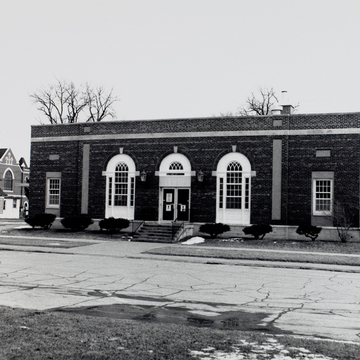A single-story rectangular brick box has been transformed into a piece of architecture by careful and thoughtful handling of the facades. The center of the street front has been pulled forward just a bit, and within this entrance wing the architects have arranged three long arches with elongated recessed panels on each side. The two flanking arches contain well-proportioned and detailed Palladian windows. The foundation of the building has been treated as a stone-sheathed band, and its horizontality is repeated in a second, quite thin band that runs around the building some 30 inches below the top of the parapet. As to imagery, the architects were, of course, thinking of eighteenth-century American Colonial architecture.
You are here
United States Post Office Building
If SAH Archipedia has been useful to you, please consider supporting it.
SAH Archipedia tells the story of the United States through its buildings, landscapes, and cities. This freely available resource empowers the public with authoritative knowledge that deepens their understanding and appreciation of the built environment. But the Society of Architectural Historians, which created SAH Archipedia with University of Virginia Press, needs your support to maintain the high-caliber research, writing, photography, cartography, editing, design, and programming that make SAH Archipedia a trusted online resource available to all who value the history of place, heritage tourism, and learning.














